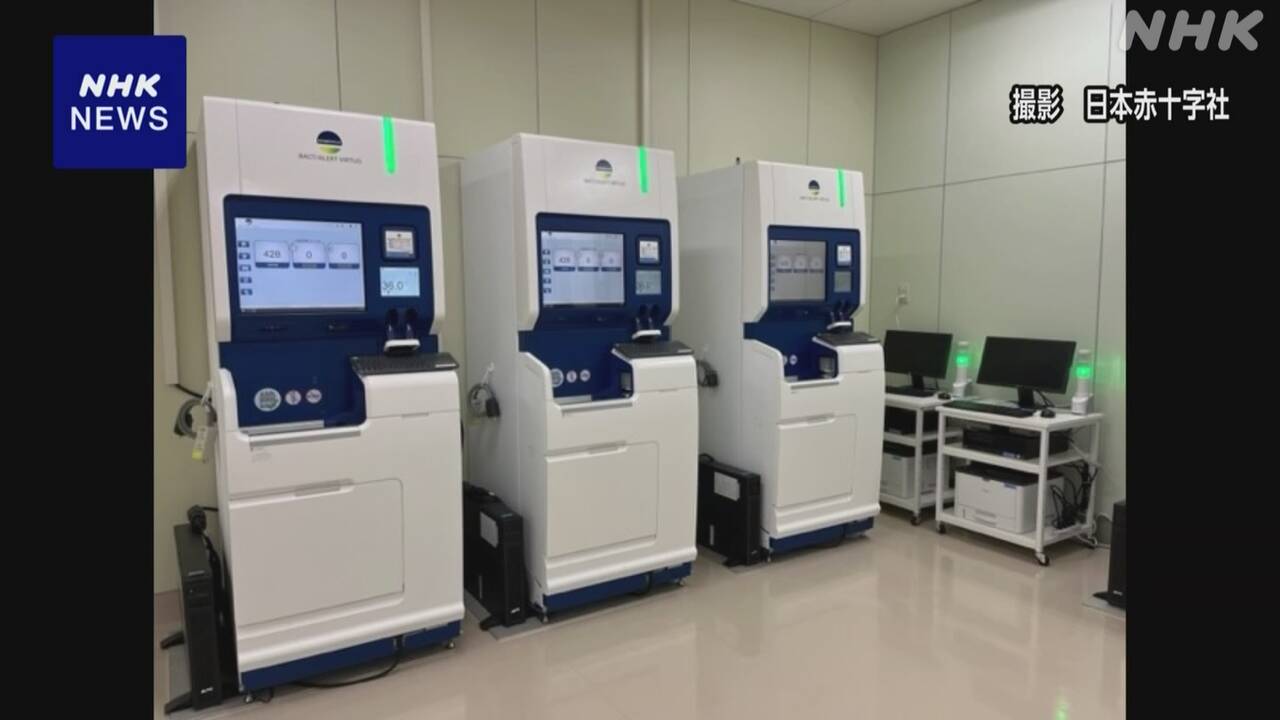In an effort to reduce the risk of bacterial infection from blood products made from donated blood, the Japanese Red Cross Society has decided to introduce a new test to check for bacterial contamination before shipping to medical institutions. .
According to the Japanese Red Cross Society, bacterial infections are extremely rare in platelet products, which are made from donated blood.Of the 16 cases reported in the six years up to last year, 10 were reported at the time. Three people died, including a girl under the age of 3.
In order to reduce the risk of such infections, the Japanese Red Cross Society has decided to introduce a new test to check whether platelet preparations are contaminated with bacteria before shipping them to medical institutions.
Platelet preparations must be stored at room temperature, so bacteria are said to grow more easily in them than in preparations such as red blood cells, which can be kept at lower temperatures.
In Japan, measures have been taken to suppress the proliferation of bacteria by shortening the validity period compared to overseas, but there are reports that the number of infections has decreased significantly in the UK, which introduced the test first, and there are calls for its introduction domestically. This means that the number has increased.
The Japanese Red Cross Society plans to apply to the government this month to introduce the new test, with the aim of starting it in July next year.
The Japanese Red Cross Society commented, ``Since blood is the raw material, it is difficult to completely eliminate the risk of bacterial contamination, but we hope that the introduction of testing will reduce the number of infections caused by blood transfusions.''
Doctor: ``I have high expectations, but I will continue to take thorough measures''
Platelet preparations are mainly used to treat blood diseases such as leukemia and patients who have suffered from large amounts of bleeding due to major injuries. At Osaka Medical and Pharmaceutical University Hospital in Takatsuki City, Osaka, the amount is equivalent to approximately 1,500 blood donations per year. using.
On the day I visited, a blood transfusion was being given to a patient hospitalized with a blood disease, and doctors, nurses, and clinical laboratory technicians were repeatedly checking the platelet preparation to make sure there were no foreign substances mixed in until just before use. In addition, even after the blood transfusion began, I was observing the patient at the bedside to see if there were any changes in his or her physical condition.
Takehiro Kono, director of the Osaka Medical and Pharmaceutical University Hospital Blood Transfusion Department, said, ``At this hospital, there have been no bacterial infections caused by platelet products for at least the past 20 years, but if testing is introduced, we will be able to treat patients with products that are one step safer. I have great expectations that I will be able to undergo this procedure.Just like organ transplant surgery, we cannot eliminate the risk of infection, so even after testing has begun, I want to continue to take thorough measures on site to benefit the patient." I was there.

